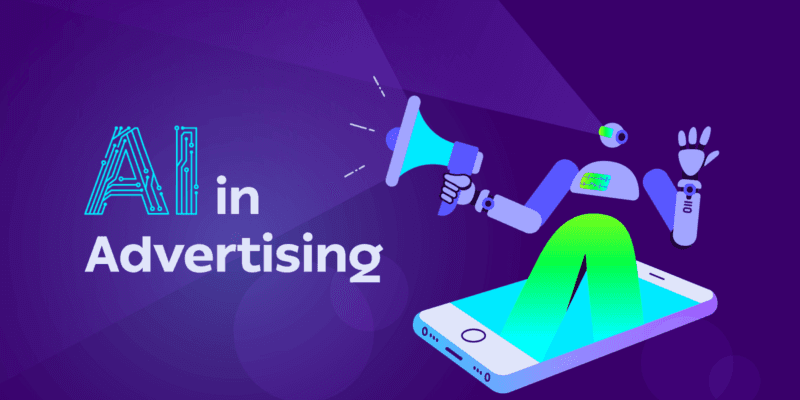Is Big Tech... Too Big?
Is Big Tech... Too Big?
Is Big Tech... Too Big?
Is Big Tech... Too Big?
Branding
/
Branding
/
Branding
/
Branding
/




Source:
The "big tech" landscape, dominated by companies like Google, Facebook (Meta), and Amazon, has established a formidable monopoly over the advertising industry. Their vast reach, data collection capabilities, and sophisticated ad-targeting technologies have solidified their position as gatekeepers of the digital advertising realm.
One of the most concerning aspects of this monopoly is the duopoly held by Google and Facebook, which together control over 54% of the global digital ad market according to eMarketer. This concentration of power allows them to dictate terms to both advertisers and publishers, stifling competition and limiting choice. Advertisers are often forced to rely on these platforms to reach their target audiences, while publishers have little bargaining power when it comes to setting ad rates.
The vast troves of data collected by big tech companies further solidify their dominance. Google, for instance, collects data on billions of users through its search engine, Gmail, YouTube, and Android operating system. This data includes search queries, browsing history, location data, and even email content. Facebook, with its vast social media network, similarly amasses a tremendous amount of user data, including demographics, interests, and social connections. By leveraging this data, big tech companies can create detailed user profiles that are highly valuable to advertisers. A study by McKinsey found that advertising campaigns that leverage user data can be up to 800% more effective than those that do not. This data advantage enables big tech companies to offer targeted advertising solutions that are far more effective than traditional methods, attracting a larger share of ad spending.
Moreover, big tech companies have vertically integrated their advertising businesses, owning and operating every stage of the ad-tech supply chain. This gives them an unfair advantage over competitors, as they can prioritize their own products and services, manipulate auctions, and extract higher fees. This lack of transparency and potential for self-dealing raises concerns about fair competition and market manipulation. A 2022 report by the Digital Content Next (DCN) found that publishers only receive around 50% of the revenue generated by advertising on their websites, with the rest going to big tech platforms.
The dominance of big tech in advertising has far-reaching consequences. Small businesses and independent publishers often struggle to compete in this landscape, as they lack the resources and data to effectively reach their audiences. According to a survey by the Small Business Administration, nearly half of small businesses (46%) report that they find it difficult to compete online. This can stifle innovation and diversity in the digital advertising ecosystem.
Consumers are also affected by this monopoly, as their online experiences are increasingly shaped by targeted advertising. A 2023 Pew Research Center survey found that 72% of Americans are concerned about the amount of data collected by advertisers. The constant tracking and profiling raise privacy concerns, as personal data is collected and used without explicit consent. The algorithms that power these ads can create filter bubbles, limiting exposure to diverse viewpoints and potentially reinforcing biases.
Governments and regulators are beginning to scrutinize the big tech advertising monopoly, launching investigations and considering regulatory measures. The goal is to promote fair competition, protect consumer privacy, and ensure transparency in the ad-tech industry. However, breaking up these powerful companies and establishing effective regulations will be a complex and challenging task.
The future of the digital advertising landscape hinges on addressing the big tech monopoly. Fostering a more competitive and transparent environment will be crucial for supporting innovation, protecting consumer choice, and ensuring a level playing field for all players in the industry. Only then can we hope to create a more equitable and sustainable digital advertising ecosystem.
The "big tech" landscape, dominated by companies like Google, Facebook (Meta), and Amazon, has established a formidable monopoly over the advertising industry. Their vast reach, data collection capabilities, and sophisticated ad-targeting technologies have solidified their position as gatekeepers of the digital advertising realm.
One of the most concerning aspects of this monopoly is the duopoly held by Google and Facebook, which together control over 54% of the global digital ad market according to eMarketer. This concentration of power allows them to dictate terms to both advertisers and publishers, stifling competition and limiting choice. Advertisers are often forced to rely on these platforms to reach their target audiences, while publishers have little bargaining power when it comes to setting ad rates.
The vast troves of data collected by big tech companies further solidify their dominance. Google, for instance, collects data on billions of users through its search engine, Gmail, YouTube, and Android operating system. This data includes search queries, browsing history, location data, and even email content. Facebook, with its vast social media network, similarly amasses a tremendous amount of user data, including demographics, interests, and social connections. By leveraging this data, big tech companies can create detailed user profiles that are highly valuable to advertisers. A study by McKinsey found that advertising campaigns that leverage user data can be up to 800% more effective than those that do not. This data advantage enables big tech companies to offer targeted advertising solutions that are far more effective than traditional methods, attracting a larger share of ad spending.
Moreover, big tech companies have vertically integrated their advertising businesses, owning and operating every stage of the ad-tech supply chain. This gives them an unfair advantage over competitors, as they can prioritize their own products and services, manipulate auctions, and extract higher fees. This lack of transparency and potential for self-dealing raises concerns about fair competition and market manipulation. A 2022 report by the Digital Content Next (DCN) found that publishers only receive around 50% of the revenue generated by advertising on their websites, with the rest going to big tech platforms.
The dominance of big tech in advertising has far-reaching consequences. Small businesses and independent publishers often struggle to compete in this landscape, as they lack the resources and data to effectively reach their audiences. According to a survey by the Small Business Administration, nearly half of small businesses (46%) report that they find it difficult to compete online. This can stifle innovation and diversity in the digital advertising ecosystem.
Consumers are also affected by this monopoly, as their online experiences are increasingly shaped by targeted advertising. A 2023 Pew Research Center survey found that 72% of Americans are concerned about the amount of data collected by advertisers. The constant tracking and profiling raise privacy concerns, as personal data is collected and used without explicit consent. The algorithms that power these ads can create filter bubbles, limiting exposure to diverse viewpoints and potentially reinforcing biases.
Governments and regulators are beginning to scrutinize the big tech advertising monopoly, launching investigations and considering regulatory measures. The goal is to promote fair competition, protect consumer privacy, and ensure transparency in the ad-tech industry. However, breaking up these powerful companies and establishing effective regulations will be a complex and challenging task.
The future of the digital advertising landscape hinges on addressing the big tech monopoly. Fostering a more competitive and transparent environment will be crucial for supporting innovation, protecting consumer choice, and ensuring a level playing field for all players in the industry. Only then can we hope to create a more equitable and sustainable digital advertising ecosystem.




What's Your Next Big Move?




What's Your Next Big Move?




What's Your Next Big Move?
What’s next?

Branding
/
Short-Form Video Ads: Mastering the Art of Capturing Attention in Seconds
In today’s fast-paced digital landscape, short-form video ads have emerged as a powerful tool for advertisers to capture audience attention quickly and effectively. Platforms like TikTok, Instagram Reels, and YouTube Shorts have revolutionized the way brands connect with their target audience, offering a unique opportunity to deliver impactful messages in just a matter of seconds.
The Rise of Short-Form Video Ads
Short-form video ads, typically ranging from 5 to 60 seconds, have gained immense popularity across various social media platforms. This trend is driven by several factors:
1. Decreasing attention spans: With the average attention span now shorter than ever, brief, engaging content is more likely to be watched in its entirety.
2. Mobile-first consumption: Short videos are perfectly suited for on-the-go viewing on smartphones, aligning with modern content consumption habits.
3. Algorithm preferences: Many social media platforms prioritize short-form content in their algorithms, increasing the potential reach for advertisers.
4. Cost-effectiveness: Short-form videos often require less production time and resources, making them an attractive option for businesses of all sizes.
Platform-Specific Trends
Each platform has its unique characteristics when it comes to short-form video ads:
TikTok
TikTok has become synonymous with short-form content, offering a highly engaging environment for advertisers:
• Videos under 15 seconds achieve a view rate of 9.40% on average.
• The platform’s algorithm favors authentic, creative content over highly polished productions.
Instagram Reels
Instagram has embraced short-form video with Reels, providing advertisers with new opportunities:
• Reels allow for videos up to 60 seconds long, with an average session time of 53 minutes.
• The integration with Instagram’s existing features makes it easy for brands to incorporate Reels into their overall strategy.
YouTube Shorts
YouTube’s entry into the short-form video space offers unique advantages:
• Shorts benefit from YouTube’s massive user base and established infrastructure.
• The platform’s reputation for longer-form content allows for creative storytelling techniques within the short format.
Tips for Creating Engaging Short-Form Video Ads
To make the most of this format, consider the following best practices:
1. Hook viewers immediately: Capture attention within the first 3 seconds using striking visuals, intriguing questions, or surprising statements.
2. Keep it concise: Aim for videos under 60 seconds to ensure high viewer retention.
3. Embrace authenticity: Raw, genuine content often performs better than overly polished productions.
4. Leverage trends: Stay current with popular sounds, challenges, and visual styles on each platform.
5. Optimize for sound-off viewing: Use captions and visual storytelling to convey your message effectively, even when viewers have their sound muted.
6. Include a clear call-to-action: Guide viewers on what to do next, whether it’s visiting your website or trying your product.
7. Use high-quality visuals: Ensure your video is visually appealing and stands out in crowded feeds.
8. Test and iterate: Experiment with different video lengths, styles, and content to find what resonates best with your audience.
Why Advertisers Are Embracing Short-Form Video Ads
The growing popularity of short-form video ads among advertisers can be attributed to several factors:
1. Higher engagement rates: Short-form videos receive 2.5 times more engagement than long-form videos.
2. Improved brand awareness: 73% of consumers prefer short-form videos when searching for new products or services.
3. Viral potential: 47% of marketers say short-form videos are more likely to go viral compared to other content formats.
4. Versatility: Short-form videos can be easily repurposed across multiple platforms, maximizing reach and ROI.
5. Appeal to younger demographics: 57% of Gen Z prefer short videos for product research.
The Future of Short-Form Video Advertising
As we look ahead to 2025 and beyond, short-form video ads are poised to play an even more significant role in digital advertising strategies. With advancements in AI and machine learning, we can expect more personalized and targeted short-form video ads that resonate with specific audience segments.
Moreover, the integration of augmented reality (AR) and virtual reality (VR) technologies into short-form video ads promises to create more immersive and interactive experiences for viewers.
In conclusion, mastering the art of short-form video ads is becoming increasingly crucial for advertisers looking to capture attention in today’s digital age. By understanding platform-specific trends, implementing best practices, and staying ahead of technological advancements, brands can leverage this powerful format to connect with their audience effectively and drive meaningful results.

Branding
/
Short-Form Video Ads: Mastering the Art of Capturing Attention in Seconds
In today’s fast-paced digital landscape, short-form video ads have emerged as a powerful tool for advertisers to capture audience attention quickly and effectively. Platforms like TikTok, Instagram Reels, and YouTube Shorts have revolutionized the way brands connect with their target audience, offering a unique opportunity to deliver impactful messages in just a matter of seconds.
The Rise of Short-Form Video Ads
Short-form video ads, typically ranging from 5 to 60 seconds, have gained immense popularity across various social media platforms. This trend is driven by several factors:
1. Decreasing attention spans: With the average attention span now shorter than ever, brief, engaging content is more likely to be watched in its entirety.
2. Mobile-first consumption: Short videos are perfectly suited for on-the-go viewing on smartphones, aligning with modern content consumption habits.
3. Algorithm preferences: Many social media platforms prioritize short-form content in their algorithms, increasing the potential reach for advertisers.
4. Cost-effectiveness: Short-form videos often require less production time and resources, making them an attractive option for businesses of all sizes.
Platform-Specific Trends
Each platform has its unique characteristics when it comes to short-form video ads:
TikTok
TikTok has become synonymous with short-form content, offering a highly engaging environment for advertisers:
• Videos under 15 seconds achieve a view rate of 9.40% on average.
• The platform’s algorithm favors authentic, creative content over highly polished productions.
Instagram Reels
Instagram has embraced short-form video with Reels, providing advertisers with new opportunities:
• Reels allow for videos up to 60 seconds long, with an average session time of 53 minutes.
• The integration with Instagram’s existing features makes it easy for brands to incorporate Reels into their overall strategy.
YouTube Shorts
YouTube’s entry into the short-form video space offers unique advantages:
• Shorts benefit from YouTube’s massive user base and established infrastructure.
• The platform’s reputation for longer-form content allows for creative storytelling techniques within the short format.
Tips for Creating Engaging Short-Form Video Ads
To make the most of this format, consider the following best practices:
1. Hook viewers immediately: Capture attention within the first 3 seconds using striking visuals, intriguing questions, or surprising statements.
2. Keep it concise: Aim for videos under 60 seconds to ensure high viewer retention.
3. Embrace authenticity: Raw, genuine content often performs better than overly polished productions.
4. Leverage trends: Stay current with popular sounds, challenges, and visual styles on each platform.
5. Optimize for sound-off viewing: Use captions and visual storytelling to convey your message effectively, even when viewers have their sound muted.
6. Include a clear call-to-action: Guide viewers on what to do next, whether it’s visiting your website or trying your product.
7. Use high-quality visuals: Ensure your video is visually appealing and stands out in crowded feeds.
8. Test and iterate: Experiment with different video lengths, styles, and content to find what resonates best with your audience.
Why Advertisers Are Embracing Short-Form Video Ads
The growing popularity of short-form video ads among advertisers can be attributed to several factors:
1. Higher engagement rates: Short-form videos receive 2.5 times more engagement than long-form videos.
2. Improved brand awareness: 73% of consumers prefer short-form videos when searching for new products or services.
3. Viral potential: 47% of marketers say short-form videos are more likely to go viral compared to other content formats.
4. Versatility: Short-form videos can be easily repurposed across multiple platforms, maximizing reach and ROI.
5. Appeal to younger demographics: 57% of Gen Z prefer short videos for product research.
The Future of Short-Form Video Advertising
As we look ahead to 2025 and beyond, short-form video ads are poised to play an even more significant role in digital advertising strategies. With advancements in AI and machine learning, we can expect more personalized and targeted short-form video ads that resonate with specific audience segments.
Moreover, the integration of augmented reality (AR) and virtual reality (VR) technologies into short-form video ads promises to create more immersive and interactive experiences for viewers.
In conclusion, mastering the art of short-form video ads is becoming increasingly crucial for advertisers looking to capture attention in today’s digital age. By understanding platform-specific trends, implementing best practices, and staying ahead of technological advancements, brands can leverage this powerful format to connect with their audience effectively and drive meaningful results.

Branding
/
Short-Form Video Ads: Mastering the Art of Capturing Attention in Seconds
In today’s fast-paced digital landscape, short-form video ads have emerged as a powerful tool for advertisers to capture audience attention quickly and effectively. Platforms like TikTok, Instagram Reels, and YouTube Shorts have revolutionized the way brands connect with their target audience, offering a unique opportunity to deliver impactful messages in just a matter of seconds.
The Rise of Short-Form Video Ads
Short-form video ads, typically ranging from 5 to 60 seconds, have gained immense popularity across various social media platforms. This trend is driven by several factors:
1. Decreasing attention spans: With the average attention span now shorter than ever, brief, engaging content is more likely to be watched in its entirety.
2. Mobile-first consumption: Short videos are perfectly suited for on-the-go viewing on smartphones, aligning with modern content consumption habits.
3. Algorithm preferences: Many social media platforms prioritize short-form content in their algorithms, increasing the potential reach for advertisers.
4. Cost-effectiveness: Short-form videos often require less production time and resources, making them an attractive option for businesses of all sizes.
Platform-Specific Trends
Each platform has its unique characteristics when it comes to short-form video ads:
TikTok
TikTok has become synonymous with short-form content, offering a highly engaging environment for advertisers:
• Videos under 15 seconds achieve a view rate of 9.40% on average.
• The platform’s algorithm favors authentic, creative content over highly polished productions.
Instagram Reels
Instagram has embraced short-form video with Reels, providing advertisers with new opportunities:
• Reels allow for videos up to 60 seconds long, with an average session time of 53 minutes.
• The integration with Instagram’s existing features makes it easy for brands to incorporate Reels into their overall strategy.
YouTube Shorts
YouTube’s entry into the short-form video space offers unique advantages:
• Shorts benefit from YouTube’s massive user base and established infrastructure.
• The platform’s reputation for longer-form content allows for creative storytelling techniques within the short format.
Tips for Creating Engaging Short-Form Video Ads
To make the most of this format, consider the following best practices:
1. Hook viewers immediately: Capture attention within the first 3 seconds using striking visuals, intriguing questions, or surprising statements.
2. Keep it concise: Aim for videos under 60 seconds to ensure high viewer retention.
3. Embrace authenticity: Raw, genuine content often performs better than overly polished productions.
4. Leverage trends: Stay current with popular sounds, challenges, and visual styles on each platform.
5. Optimize for sound-off viewing: Use captions and visual storytelling to convey your message effectively, even when viewers have their sound muted.
6. Include a clear call-to-action: Guide viewers on what to do next, whether it’s visiting your website or trying your product.
7. Use high-quality visuals: Ensure your video is visually appealing and stands out in crowded feeds.
8. Test and iterate: Experiment with different video lengths, styles, and content to find what resonates best with your audience.
Why Advertisers Are Embracing Short-Form Video Ads
The growing popularity of short-form video ads among advertisers can be attributed to several factors:
1. Higher engagement rates: Short-form videos receive 2.5 times more engagement than long-form videos.
2. Improved brand awareness: 73% of consumers prefer short-form videos when searching for new products or services.
3. Viral potential: 47% of marketers say short-form videos are more likely to go viral compared to other content formats.
4. Versatility: Short-form videos can be easily repurposed across multiple platforms, maximizing reach and ROI.
5. Appeal to younger demographics: 57% of Gen Z prefer short videos for product research.
The Future of Short-Form Video Advertising
As we look ahead to 2025 and beyond, short-form video ads are poised to play an even more significant role in digital advertising strategies. With advancements in AI and machine learning, we can expect more personalized and targeted short-form video ads that resonate with specific audience segments.
Moreover, the integration of augmented reality (AR) and virtual reality (VR) technologies into short-form video ads promises to create more immersive and interactive experiences for viewers.
In conclusion, mastering the art of short-form video ads is becoming increasingly crucial for advertisers looking to capture attention in today’s digital age. By understanding platform-specific trends, implementing best practices, and staying ahead of technological advancements, brands can leverage this powerful format to connect with their audience effectively and drive meaningful results.

Branding
/
The Rise of AI in Advertising: How Machine Learning is Revolutionizing Ad Campaigns
Artificial Intelligence (AI) is no longer a futuristic concept in advertising—it’s here, and it’s transforming the industry at breakneck speed. From automated programmatic advertising to hyper-personalized content creation, AI is reshaping how brands connect with their audiences.
The AI Revolution in Advertising
Machine learning algorithms are now capable of analyzing vast amounts of data to predict consumer behavior, optimize ad placements, and even generate creative content. This shift is enabling advertisers to create more targeted, efficient, and effective campaigns than ever before.
Key Areas Where AI is Making an Impact
1. Programmatic Advertising: AI-driven programmatic platforms can now make real-time decisions about ad placements, ensuring that ads reach the right audience at the right time and on the right device.
2. Predictive Analytics: Machine learning models can forecast consumer trends and behaviors, allowing advertisers to stay ahead of the curve and tailor their strategies accordingly.
3. Dynamic Creative Optimization: AI can automatically adjust ad creative elements based on user data, ensuring that each viewer sees the most relevant version of an ad.
4. Chatbots and Virtual Assistants: AI-powered conversational interfaces are providing personalized customer experiences and gathering valuable data for advertisers.
Real-World Success Stories
Several brands have already seen significant success with AI-driven advertising:
• Netflix: Uses machine learning to personalize thumbnail images for shows and movies, increasing viewer engagement.
• Coca-Cola: Employed AI to analyze data from self-service soft drink fountains to create new flavor combinations.
• Alibaba: Developed an AI copywriter that can generate thousands of ads per second, used by merchants on its e-commerce platforms.
The Future of AI in Advertising
As AI technology continues to advance, we can expect even more innovative applications in advertising. From AI-generated influencers to predictive product development, the possibilities are endless.
However, it’s crucial to remember that while AI is a powerful tool, human creativity and strategic thinking remain irreplaceable. The most successful advertisers will be those who can effectively combine AI’s analytical power with human insight and creativity.
In conclusion, AI is not just changing the advertising landscape—it’s redefining it. As we move forward, embracing and adapting to these technological advancements will be key to staying competitive in the ever-evolving world of advertising.

Branding
/
The Rise of AI in Advertising: How Machine Learning is Revolutionizing Ad Campaigns
Artificial Intelligence (AI) is no longer a futuristic concept in advertising—it’s here, and it’s transforming the industry at breakneck speed. From automated programmatic advertising to hyper-personalized content creation, AI is reshaping how brands connect with their audiences.
The AI Revolution in Advertising
Machine learning algorithms are now capable of analyzing vast amounts of data to predict consumer behavior, optimize ad placements, and even generate creative content. This shift is enabling advertisers to create more targeted, efficient, and effective campaigns than ever before.
Key Areas Where AI is Making an Impact
1. Programmatic Advertising: AI-driven programmatic platforms can now make real-time decisions about ad placements, ensuring that ads reach the right audience at the right time and on the right device.
2. Predictive Analytics: Machine learning models can forecast consumer trends and behaviors, allowing advertisers to stay ahead of the curve and tailor their strategies accordingly.
3. Dynamic Creative Optimization: AI can automatically adjust ad creative elements based on user data, ensuring that each viewer sees the most relevant version of an ad.
4. Chatbots and Virtual Assistants: AI-powered conversational interfaces are providing personalized customer experiences and gathering valuable data for advertisers.
Real-World Success Stories
Several brands have already seen significant success with AI-driven advertising:
• Netflix: Uses machine learning to personalize thumbnail images for shows and movies, increasing viewer engagement.
• Coca-Cola: Employed AI to analyze data from self-service soft drink fountains to create new flavor combinations.
• Alibaba: Developed an AI copywriter that can generate thousands of ads per second, used by merchants on its e-commerce platforms.
The Future of AI in Advertising
As AI technology continues to advance, we can expect even more innovative applications in advertising. From AI-generated influencers to predictive product development, the possibilities are endless.
However, it’s crucial to remember that while AI is a powerful tool, human creativity and strategic thinking remain irreplaceable. The most successful advertisers will be those who can effectively combine AI’s analytical power with human insight and creativity.
In conclusion, AI is not just changing the advertising landscape—it’s redefining it. As we move forward, embracing and adapting to these technological advancements will be key to staying competitive in the ever-evolving world of advertising.

Branding
/
The Rise of AI in Advertising: How Machine Learning is Revolutionizing Ad Campaigns
Artificial Intelligence (AI) is no longer a futuristic concept in advertising—it’s here, and it’s transforming the industry at breakneck speed. From automated programmatic advertising to hyper-personalized content creation, AI is reshaping how brands connect with their audiences.
The AI Revolution in Advertising
Machine learning algorithms are now capable of analyzing vast amounts of data to predict consumer behavior, optimize ad placements, and even generate creative content. This shift is enabling advertisers to create more targeted, efficient, and effective campaigns than ever before.
Key Areas Where AI is Making an Impact
1. Programmatic Advertising: AI-driven programmatic platforms can now make real-time decisions about ad placements, ensuring that ads reach the right audience at the right time and on the right device.
2. Predictive Analytics: Machine learning models can forecast consumer trends and behaviors, allowing advertisers to stay ahead of the curve and tailor their strategies accordingly.
3. Dynamic Creative Optimization: AI can automatically adjust ad creative elements based on user data, ensuring that each viewer sees the most relevant version of an ad.
4. Chatbots and Virtual Assistants: AI-powered conversational interfaces are providing personalized customer experiences and gathering valuable data for advertisers.
Real-World Success Stories
Several brands have already seen significant success with AI-driven advertising:
• Netflix: Uses machine learning to personalize thumbnail images for shows and movies, increasing viewer engagement.
• Coca-Cola: Employed AI to analyze data from self-service soft drink fountains to create new flavor combinations.
• Alibaba: Developed an AI copywriter that can generate thousands of ads per second, used by merchants on its e-commerce platforms.
The Future of AI in Advertising
As AI technology continues to advance, we can expect even more innovative applications in advertising. From AI-generated influencers to predictive product development, the possibilities are endless.
However, it’s crucial to remember that while AI is a powerful tool, human creativity and strategic thinking remain irreplaceable. The most successful advertisers will be those who can effectively combine AI’s analytical power with human insight and creativity.
In conclusion, AI is not just changing the advertising landscape—it’s redefining it. As we move forward, embracing and adapting to these technological advancements will be key to staying competitive in the ever-evolving world of advertising.
